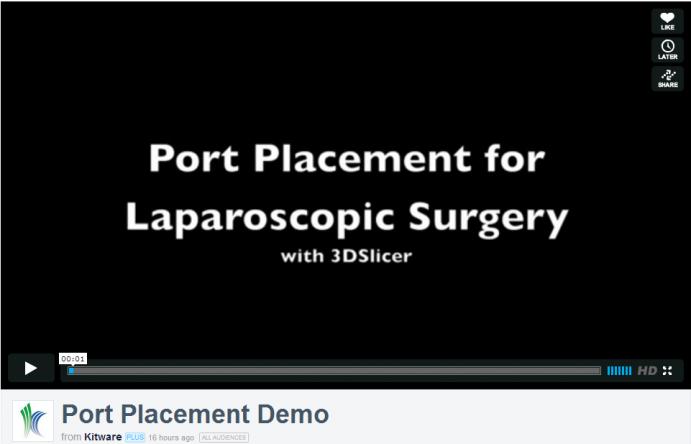Port Placement for Laparoscopic Surgery

We’d like to introduce a new 3D Slicer extension module – the Laparoscopic Surgery Port Placement module. This extension assists surgeons in planning a laparoscopic surgical procedure. In laparoscopic surgery, the surgeon makes small incisions in the patient’s body and passes long, narrow tools through the incisions. The surgeon then performs the procedure by pivoting and maneuvering the tools about the incision points, or ports. Appropriate placement of these ports is critical for the surgeon to have the flexibility to reach the surgical targets.
Typically, surgeons place surgical ports using medical intuition and external landmarks on the patient’s body. However, when the surgeon lacks experience or when internal anatomical structure does not correspond to external features (this is not uncommon), these port placement strategies can fail. The new Port Placement extension can assist in port placement planning by visualizing ports and simulated surgical tools over preoperative medical imagery. The visualization allows the surgeon to see the result of a given configuration of ports; for instance, the surgeon might see that a simulated tool cannot reach a given surgical target without passing through a sensitive organ, so the surgeon can move the port around until the visualization shows that the tool has unhampered access to the target. This functionality can lead to port placement planning which can ensure that the surgeon has the flexibility needed to safely and successfully carry out the surgical procedure.
The Port Placement extension is available in the Slicer app store. Here is a video demonstrating the features of the module:
Additional details can be found at:
slicer.org/slicerWiki/index.php/Documentation/Nightly/Extensions/PortPlacement
The video demonstration used the Nightly version of 3D Slicer (github), the Port Placement extension (github), and the SPL Abdominal Atlas.
